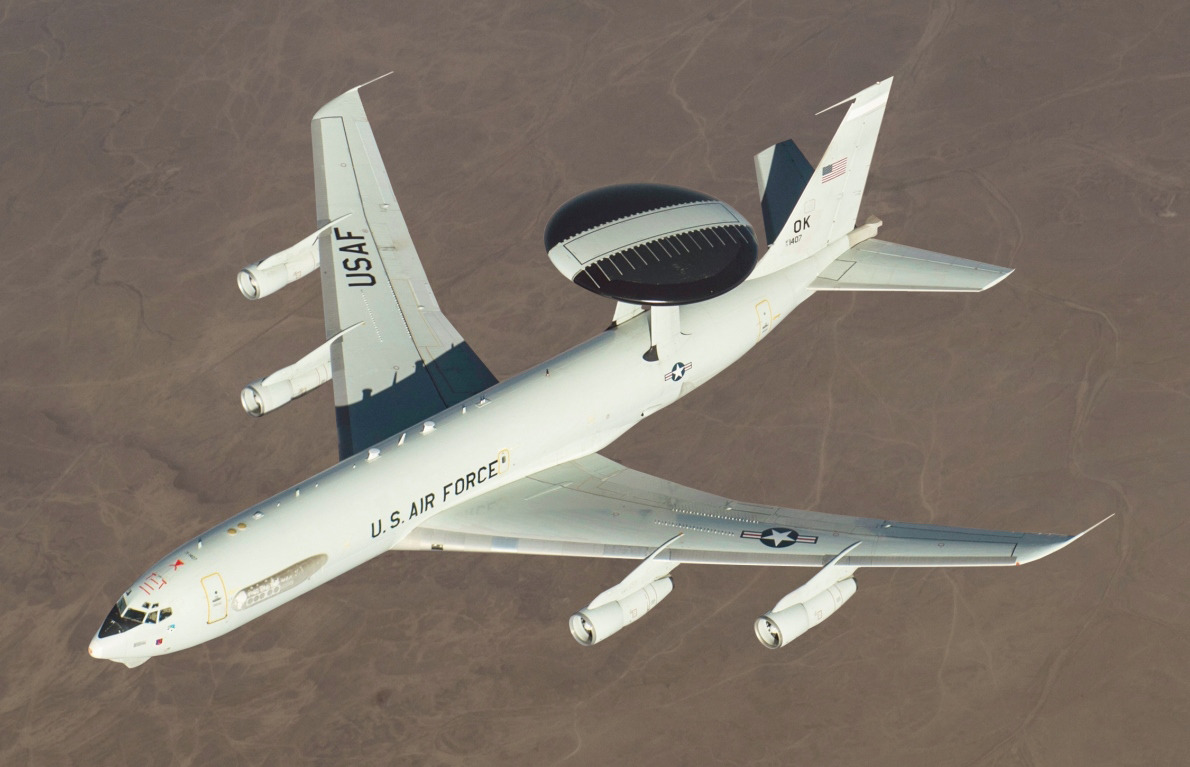Firstly, some background on the aircraft the E-7 is (mostly) replacing: the E-3 Sentry. The E-3 uses the AN/APY-1/2 radar, comprised of a single Passive Electronically Scanned Array (PESA). This array is physically scanned in azimuth and electronically scanned in elevation.




Although advanced for the time, this is now a relatively simple way of doing things and comes with a number of drawbacks, most notably of which is the long duration between track revisits (~10s), limited by the rotation speed of the radar.
This physical limitation also means a reduction in potential range as the radar cannot point its beam at a track for very long (dwell time) before being swept to the next track.
While these limitations were more than acceptable at the time, with the advent of faster weapons, more contested environments, stand-off weapons and more contested kill chains, better radar performance is needed.
Using fixed electronically scanned arrays almost entirely negates the issues of low track update rates caused by the physical rotation of the radar. In contrast, the beams can be scanned extremely quickly and tracks can be updated several times a second.
In fact, the E-7 can select certain areas and tracks of high interest to revisit more frequently, increasing the track update rate. In addition, a longer dwell time can increase detection range in a certain area. 

You'll notice that this graphic also (correctly) implies that the E-7 gets constant 360⁰ coverage. It's sometimes assumed that the Wedgetail only has two side-facing arrays, similar to Saab's GlobalEye, with a blind spot fore and aft but this is not the case.
While the E-7 does have two side facing arrays that cover the ~120⁰ side sectors, the top horizontal plane of the top hat shape contains a similarly sized third array where the plane of the array faces directly upwards. 

This top array is somewhat unconventional compared to normal phased arrays - rather than forming its beam to the broadside of the array face, it forms it parallel along the face of the array (known as end-fire) allowing for forwards and aft coverage.
Ultimately this setup gives the E-7 three large arrays to cover the entire space around the aircraft, in this regard giving it an operational advantage over aircraft like Saab's GlobalEye.
• • •
Missing some Tweet in this thread? You can try to
force a refresh

 Read on Twitter
Read on Twitter





